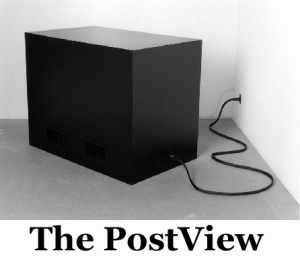The PostView: Should Advertisers Build Their Own Bidders To Buy At The Impression Level?
by Ciaran O'Kane on 29th Mar 2012 in News


The PostView is a column written by senior execs working in the European online advertising industry.
Publishers building their own bidders? Who would have thought it? For those of you who missed it, you should read Martin Van Der Meij's recent piece on why as a publishing group, TMG want its own bidder to power its PTD (Publisher Trading Desk) operation. Van Der Meij certainly makes some compelling arguments as to why any publisher would want to execute this strategy.
If publishers are now starting on this path, is it time advertisers started to think about developing their own bidder? Is it even a realistic ambition?
What do we really mean when talking about advertisers creating their own bidder? In effect, we are looking at advertisers custom developing a bidder to drive their RTB investment. This does not necessarily mean they have to hire 30 engineers and completely reinvent the wheel. In the same way that TMG have outsourced development to ClickDistrict, advertisers could follow a similar path. Note the word ‘could’. This will not be a sustainable commercial model for all advertisers - especially those who consider the display channel an add-on.
Where most value is being created
Advertisers are about ROI. Plain and simple. They want to extract the most value from every £ or € spent. When assessing the DSP space, we need to look no further than the history of ad serving to determine where the value is being created? Ad serving has become a zero sum game. It has become incredibly commoditised and to advertisers certainly, fairly ubiquitous. DSPs arguably could go the same way. There is likely to be increased focus and spotlight on the DSP technology space by client side procurement teams that will inevitably place downward pressure on pricing and margins. That’s simply the reality of operating a technology platform business.
Value is however created more by those operating the technologies. It always has been. Look at the Search industry. Search platforms are now priced at circa 2% of spend in some cases - whereas Agencies and Search specialists are still able to command 10% of spend in commission.
Coming back to DSPs and advertisers, this is why I think advertisers will not develop their own bidders. It isn’t necessarily the underlying technology that adds most value to them.
Customising existing Bidders is the win-win scenario
The smart bet is likely to be around advertisers customising the controls of how a DSP actually bids. This will not simply be a team of buyers simply adjusting frequency caps, budgets caps, bid settings, site exclusions - it will focus heavily on statistical models that use customised weightings for each individual impression.
We will soon see DSPs being capable of facilitating a new wave of BYOA (bring your own algos) and it will be interesting to see who gets there first (it's likely that many DSP vendors will argue that they are already there of course)
This becomes the win-win scenario for advertisers. It means they are no longer playing by the same rules of every other advertiser (and competitor) using that DSP. And they are able to execute this without the hundreds of thousands pound cost of developing their own tech. It will provide enough differentiation to gain some competitive advantage on an impression by impression basis without the huge cost of developing the underlying technology.
Let’s also remember, that broadly speaking, the RTB world is still a niche within a niche (and for even the biggest advertisers it might not even be on their radar at all). There are probably only a handful of endemic digital brands that have even contemplated the proprietery bidder approach?
Use cases of custom algorithms
While I won't write down every way an algorithm might be custom designed, suffice to say, it is pretty much a blank canvas.
How might advertisers might want to weight impressions differently:
- Ad Visibility
- Content verticals that have greater affinity to their brand
- Creative size if an advertiser simply believes a 300x600 is more impactful than a 234x60
- Specific 1st party data assets being leveraged beyond onsite pixels
- Custom scoring models based on proprietary propensity modelling
The list could easily go on.
Are Bidders and Algorithms mutually exclusive?
Are bidders and algorithms mutually exclusive? Are they the same thing? This a prescient question. If you custom design an algorithm, are you effectively re-designing a bidder? As of today the answer is likely to be yes. You want to change the way the tech bids, you build a bidder.
However, there might be an interesting business model of the future for the DSPs: build a BYOA version and effectively price your DSP at a higher level. It would certainly appeal to advertisers. The higher cost being offset by what you’d expect to be improved performance, without the need for any capital outlay. This would be of particular interest given that this concerns a channel that isn't necessarily top of their agenda.
DSPs can learn from the past. Build different business models of access to your technology. This will ensure you don't get commoditised and get driven down to a low single digit margins. And given the inevitable move towards a BYOA approach by savvy advertisers, there is likely to be a huge market for tech vendors offering this solution. The bespoke algo has arrived.
Ad ServerAd TechAdvertiserDisplayProgrammaticTrading








Follow ExchangeWire